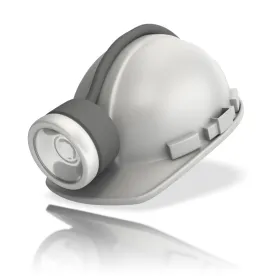Citing its 1994 legal decision holding that the “wholesale incorporation of a litigant’s brief is a questionable judicial practice,” the Federal Mine Safety and Health Review Commission has remanded for further analysis a judge’s determinations regarding enforcement actions taken against a Virginia coal operator and vacated others.
In May 2012, the Mine Safety and Health Administration issued an imminent danger order under the Mine Act against Mill Branch Coal Corp. for allegedly hazardous conditions at its Low Splint A Mine. In addition, Mill Branch received one citation for allegedly failing to maintain adequately the mine’s primary escapeway and two orders for failing to inspect and record hazardous conditions in the intake and return escapeways on mandatory weekly mine examinations. The citation and inspecting/recording orders were written as unwarrantable failure and significant and substantial (S&S). Unwarrantable failure refers to aggravated conduct beyond ordinary negligence. S&S reflects the inspector’s belief that the infraction could cause serious injury or illness.
The mine’s safety problems stemmed from floor heaving, a condition in which the floor of the mine rises because it is too soft to bear the weight of the roof support pillars. On the day of the inspection, production had ceased because heaving had pushed a belt so close to the roof it could no longer operate. Inspectors observed floor heaving and rib (wall) deterioration in both the primary and secondary escapeways. They also observed deterioration at the roof/rib juncture in an area where seven miners were dissembling equipment. There had been a roof fall in the primary escapeway, and a personnel transport vehicle was unable to travel through the escapeway due to heaving. Inspectors could not find doors that would open between the primary and secondary escapeways. MSHA found that escapeway conditions had not been recorded in the weekly examination book.
Administrative Law Judge John Kent Lewis upheld all four enforcement actions. However, he dismissed the three unwarrantable failure determinations. His decision left both parties dissatisfied. Mill Branch appealed parts of his decision to the Commission, and MSHA objected to the unwarrantable failure declassifications for the inspecting/recording violations.
While the Commission panel sided with ALJ Lewis’s ruling that all of the enforcement actions should be upheld, it took issue with the judge’s dismissal of the unwarrantable failure categorizations. The commissioners also found fault with his support of the S&S markers for the inspecting/recording violations, because, they said, Lewis had merely accepted MSHA’s justifications for both S&Ss in the agency’s post-hearing brief without conducting his own independent analysis.
“Without the Judge’s findings and explanations, we are unable to effectively perform our review function,” the three-judge panel said, sending the matter back to the ALJ.Mill Branch Coal Corp. v. Sec’y of Labor, Dockets Nos. VA 2012-435-R, 436-R, 439-R and 440-R (July 23, 2015). For similar reasons, the commissioners vacated his determination that the inspecting/recording violations were not due to unwarrantable failure and remanded for Lewis to provide findings and analyses consistent with the panel’s ruling.
The decision also revealed a difference of opinion between one commissioner and that of the Commission majority over the interpretation of “imminent danger.” The Mine Act defines the phrase as a condition or practice “which could reasonably be expected to cause death or serious physical harm before such condition or practice can be abated.” The statute directs MSHA to issue an order withdrawing all persons from the affected area until the danger no longer exists.
As the Commission explained, it had held in 1991 that there must be some degree of imminence to support an imminent danger order and evidence that the hazardous situation could cause serious harm within a short period of time. However, in 2014, the Commission clarified that MSHA need not demonstrate in all cases that, to prove imminence, death, or serious harm would have to occur within a short time. Rather, it held that an imminent danger occurs when a condition or practice could reasonably be expected to cause death or serious physical harm before the condition or practice can be abated.
But Commissioner Robert F. Cohen, Jr., disputed the 1991 decision, since it differed from earlier Commission and appeals court rulings that declined to limit imminent danger to hazards posing an immediate danger. Thus, Cohen would not require MSHA to demonstrate that the cited hazardous condition could cause serious injury within a short time.
Penalties have yet to be set in the case. Originally, MSHA proposed $222,350 for the citation and two orders. Imminent danger orders are non-assessable. The operator abandoned the mine about five months after the MSHA inspection.
Operators can increase their odds of winning a contest, and reducing the risk of Commission reversals, by submitting proposed findings of facts to the ALJ that meet case law definitions and comply with applicable precedent.



 />i
/>i
